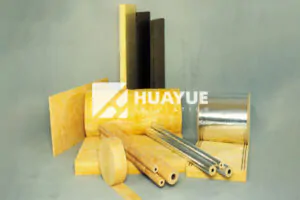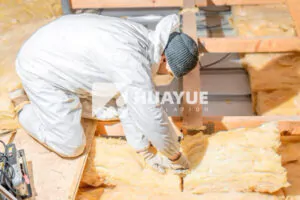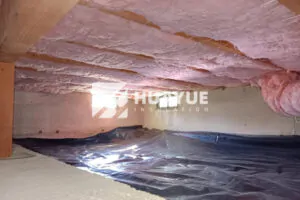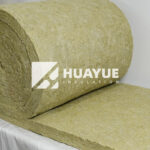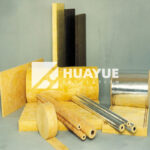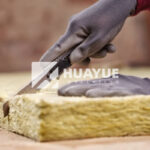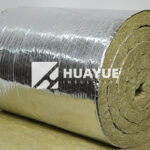Can Fiberglass Insulation Contain Asbestos?
Fiberglass insulation is popular, but some people worry it might contain asbestos, and that can be serious. Let’s clear up the concern with real facts.
Fiberglass insulation made today does not contain asbestos. Manufacturers like HUAYUE guarantee products are asbestos-free, with supporting testing reports available for customers.
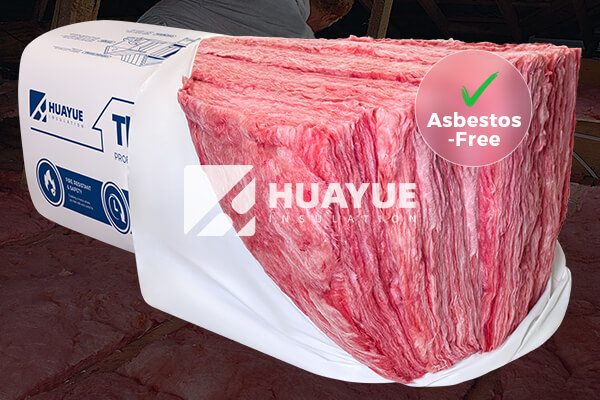
A lot of people pause before they start any building or renovation, fearful of hidden dangers inside the walls. In my experience, customers always want proof their insulation is safe. They ask me for reports, standards and certification. Most of the clients I serve don’t want to take any chances, especially after hearing negative stories about older buildings. If you’re concerned about asbestos in insulation, you’re not alone. Stay with me as I explain why modern fiberglass insulation is safe and how to recognize possible risks.
Is asbestos in fiberglass insulation?
Rumors about asbestos in insulation make many property owners nervous, especially when safety regulations seem confusing.
Fiberglass insulation does not naturally contain asbestos. Reputable manufacturers, including HUAYUE, have adopted strict procedures, certifications, and raw material sourcing to guarantee no asbestos is present.
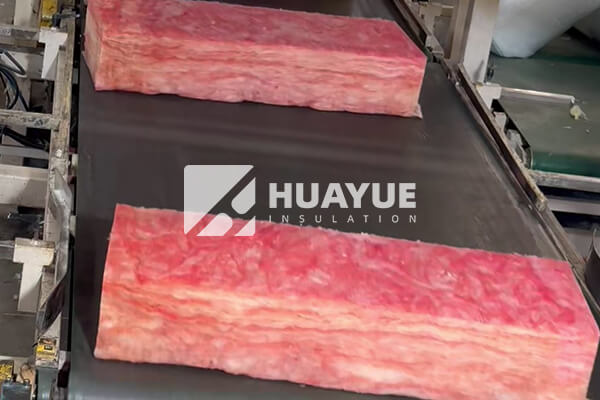
Fiberglass is made from melted glass spun into fibers, then formed into batts, boards or rolls. Asbestos, on the other hand, is a mineral mined from the earth. In my work over the years, I’ve explained to clients that our products never mix the two materials. International standards also require tests for asbestos and other harmful substances in insulation. At HUAYUE, we offer sample analysis reports to prove products are 100% asbestos-free. Major certifications, like CE, SGS, ISO 9001, and ISO 14001, require regular checks. We have sent products to labs in Europe and Asia for independent validation. If you are ever uncertain, ask for these certifications or request a sample report.
| Property | Fiberglass Insulation | Asbestos Insulation |
|---|---|---|
| Appearance | Yellow/Pink/White | Gray/Brown/White |
| Texture | Soft, fluffy | Brittle, crumbly |
| Fire Resistance | Good | Excellent |
| Asbestos Content | None (modern) | High (older types) |
| Common Age | Post-1980s (modern) | Pre-1980s |
To sum up, modern fiberglass insulation is made and certified not to contain asbestos. Always request proof from your supplier.
Does Older Insulation Contain Asbestos?
Many clients working on renovation projects ask me if older insulation could pose hidden dangers.
Some insulation installed before the 1980s may contain asbestos, but fiberglass insulation itself never used asbestos as a main ingredient.
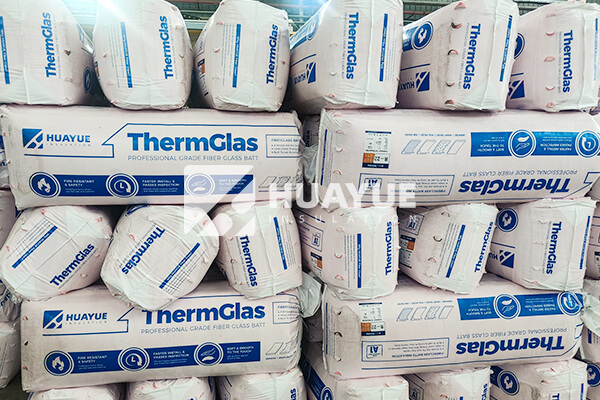
In past decades, builders used various insulation types, especially around pipes, boilers, and structural joints. The most risky products were “asbestos insulation,” not fiberglass. Asbestos pipe wrap, loose-fill and blanket insulation are usually older, grayish products, often installed before strict regulations began. When inspecting an old building, age matters. Any insulation installed before 1980 needs attention. Most fiberglass insulation can be identified by a yellow or pink color and a soft texture. If you see brittle, crumbly, gray or brown material, that’s a red flag.
Personal experience tells me it’s best to hire a professional inspector if you suspect older insulation. They take samples and send them to labs for asbestos analysis. Modern regulations now require a thorough check before starting any demolition or replacement. I always advise customers to look for manufacturer markings, date stamps or paperwork if possible. If you’re still unsure, ask for an asbestos test before disturbing the material. It’s safer and avoids costly errors later.
| Signs of Older Asbestos Insulation | Signs of Modern Fiberglass Insulation |
|---|---|
| Installed pre-1980 | Installed post-1980 |
| Gray, crumbly material | Yellow, pink, or white fibers |
| Paper wrapping with “asbestos” label | Manufacturer stamp, batch ID |
| Placed around pipes, boilers | Fit between wall studs, ceilings |
If your building is old, double-check the insulation before making any improvements.
Should You Replace Your Insulation?
Many property owners wonder if it’s worth replacing their insulation, especially when concerned about health or energy costs.
If your insulation is old, damaged, or possibly contains asbestos, replacement is the best and safest choice. Modern fiberglass insulation is safe, efficient, and certified.
Upgrading insulation is more than just reducing energy bills. From what I’ve seen as a manufacturer and exporter, clients get peace of mind knowing new insulation doesn’t contain asbestos or formaldehyde. At HUAYUE, we provide both standard fiberglass and no-formaldehyde series for sensitive projects. Our export clients repeatedly request product safety documentation, which we’re happy to supply. New insulation also improves fire safety, lowers maintenance costs, and helps meet the toughest building codes. Replacement can give you a healthier indoor environment, better temperature control, and fewer worries about regulations.
Deciding to replace isn’t always easy. Before starting, check the insulation’s age, condition, and any health or safety concerns. Professional installers can test and remove any old or dangerous insulation properly. Suppliers like HUAYUE will provide certified non-asbestos and non-formaldehyde products, with technical teams ready to help. Investing in safe insulation protects your building, your team, and your budget for years.
| When to Replace | Why Replace | Replacement Benefits |
|---|---|---|
| Damaged or wet insulation | Remove health hazards | No asbestos, better air quality |
| Installed pre-1980 | Meet safety regulations | Higher energy efficiency |
| Contains unknown fibers | Reduce risks, avoid fines | Fire-resistant, durable materials |
| Renovating older space | Upgrade to new standards | Improve property value, comfort |
Replacing old insulation is the first step to creating a safer, more efficient space.
Conclusion
Fiberglass insulation today does not contain asbestos. If you are unsure about older materials, choose certified, modern insulation for best safety and efficiency.
You may also be interested in:
Ready to Get Started?
Get in touch with our experts for personalized solutions tailored to your needs.
Get Free QuoteLatest Articles
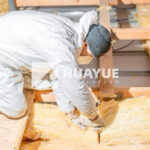
What is Glass Wool Used For?
Dec 3, 2025
Let's Work Together
Ready to take your business to the next level? Get in touch with our team of experts and let's discuss how we can help you achieve your goals.
Get Free Solutions
